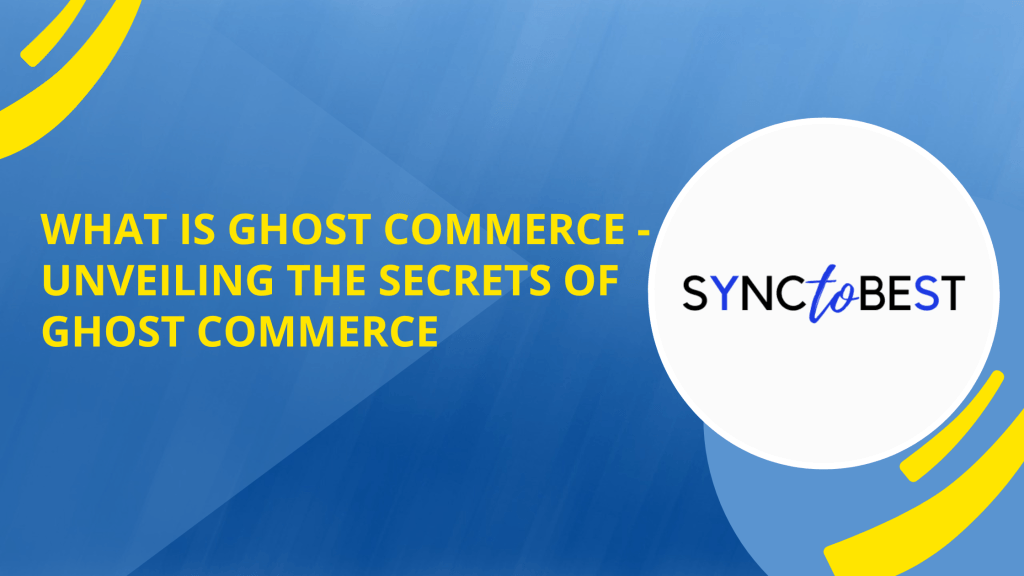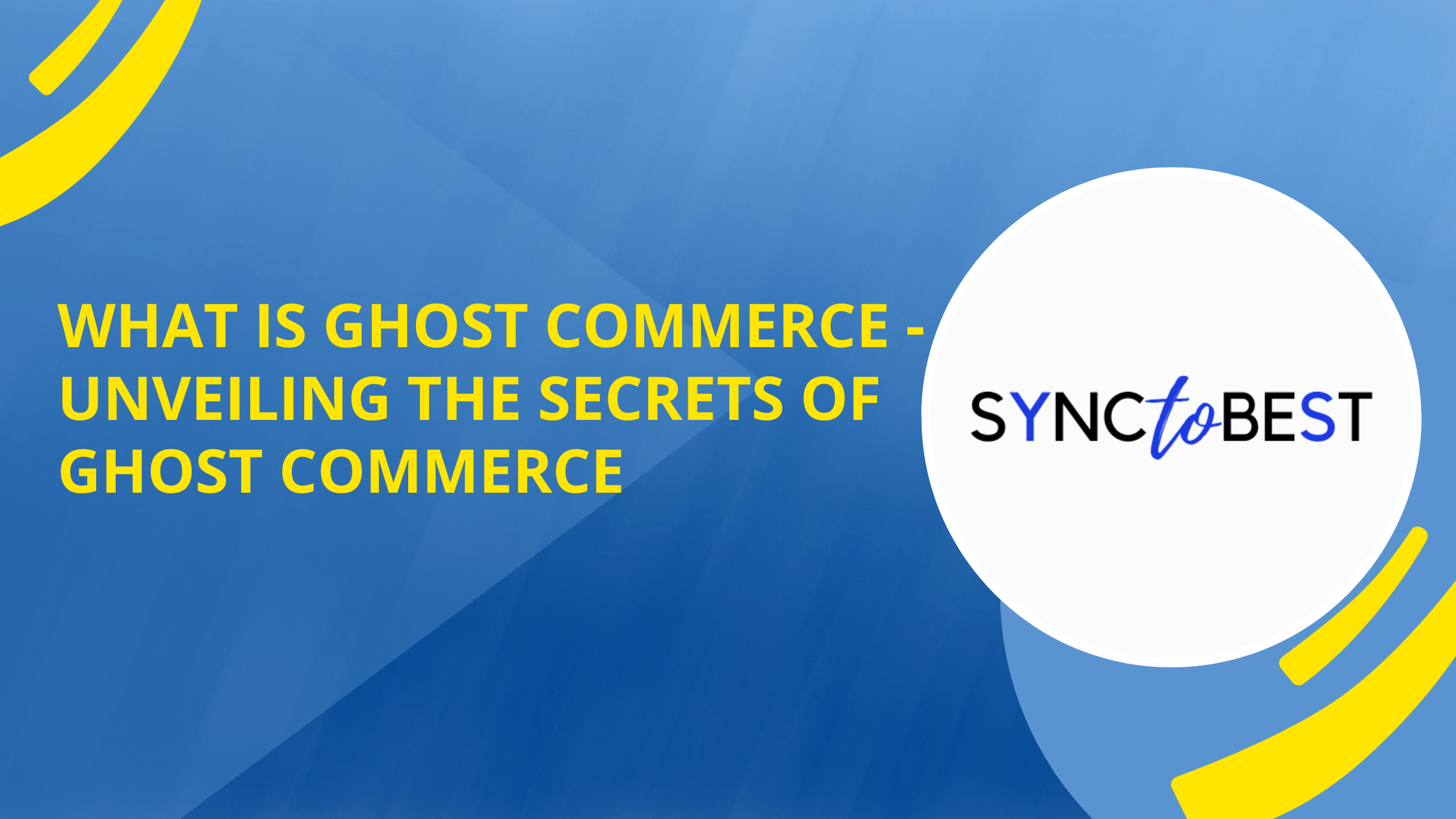In today’s rapidly evolving digital landscape, new business models continue to emerge, transforming the way we buy and sell goods. One such model that has gained significant attention is ghost commerce. This article explores the concept of ghost commerce, its impact on traditional retail, advantages, challenges, and strategies for success.
Definition of Ghost Commerce
Ghost commerce refers to the practice of conducting commercial transactions without a physical presence or traditional brick-and-mortar store. It involves leveraging digital platforms, online marketplaces, and advanced technologies to sell products or services directly to customers. Unlike traditional retail, ghost commerce eliminates the need for physical stores and focuses on creating virtual experiences for consumers.

Understanding the Concept of Ghost Commerce
E-commerce and online buying are fueling ghost commerce. It improves consumer experience via AR, VR, and AI.By combining these technologies, businesses can create immersive virtual storefronts, interactive product demonstrations, and personalized shopping experiences.
The Rise of Ghost Commerce
The rise of ghost commerce can be attributed to several factors. Firstly, advancements in technology have made it easier for businesses to create compelling virtual experiences that replicate the benefits of physical stores. Customers can now explore products, interact with them virtually, and make informed purchase decisions without leaving their homes.
Secondly, the convenience and accessibility of online shopping have fueled the growth of ghost commerce. This convenience factor, coupled with fast and reliable shipping services, has made ghost commerce an appealing option for consumers.
The Impact of Ghost Commerce on Traditional Retail
Ghost commerce has disrupted traditional retail in several ways. Traditional brick-and-mortar retailers must compete with online marketplaces and virtual storefronts and adapt to changing consumer demands.
E-commerce has forced many stores to close or downsize.Ghost commerce offers traditional retailers new opportunities.
Retailers may improve consumer experience and expand their reach by adopting and integrating digital technology.
Omnichannel strategies that combine online and offline experiences have become crucial for staying competitive in the ghost commerce era.
Advantages of Ghost Commerce
Ghost commerce offers several advantages for businesses and consumers alike. For businesses, it eliminates the high costs associated with maintaining physical stores, such as rent, utilities, and staffing. It also enables businesses to reach a global audience and expand their customer base without geographical limitations.
From a consumer perspective, ghost commerce provides convenience, personalization, and a seamless shopping experience. Customers can explore products virtually, visualize how they would look or fit in their lives, and make informed purchase decisions. Additionally, the ability to shop anytime, anywhere, has revolutionized the way people buy goods and services.
Know more about What is Affiliate Marketing – A Free Virtual Event.
Challenges and Risks Associated with Ghost Commerce
While ghost commerce presents exciting opportunities, it also comes with its fair share of challenges and risks. One of the primary challenges is building trust and credibility in the online space. With countless businesses vying for consumers’ attention, establishing a reputable brand and ensuring secure transactions are crucial for success.
Furthermore, the lack of physical interaction and sensory experiences can be a drawback of ghost commerce. Customers may miss the tactile aspect of shopping, such as touching and trying on products before making a purchase. Overcoming this challenge requires businesses to invest in technologies that replicate these experiences virtually.
Overcoming the Challenges of Ghost Commerce
To overcome the challenges associated with ghost commerce, businesses need to prioritize customer trust and engagement. Building a strong online presence, providing transparent information about products and services, and offering reliable customer support are essential for establishing credibility.
Investing in advanced technologies such as AR and VR can help bridge the gap between physical and virtual experiences. By allowing customers to virtually try on clothes, visualize furniture in their homes, or test cosmetic products, businesses can enhance the shopping experience and mitigate the limitations of ghost commerce.
Strategies for Successful Ghost Commerce
To thrive in the world of ghost commerce, businesses should consider implementing the following strategies:
- Invest in immersive technologies: By leveraging AR, VR, and AI, businesses can create captivating virtual experiences that engage customers and drive sales.
- Prioritize customer experience: Focus on delivering personalized, seamless, and convenient shopping experiences to build customer loyalty and differentiate from competitors.
- Build a strong online presence: Establish a reputable brand through effective digital marketing, customer reviews, and testimonials.
- Secure online transactions: Implement robust security measures to protect customer data and provide a safe shopping environment.
- Adopt an omnichannel approach: Integrate online and offline channels to provide a cohesive and consistent brand experience across multiple touchpoints.
Ghost Commerce in Different Industries
Ghost commerce is not limited to any specific industry and has the potential to transform various sectors. From fashion and beauty to furniture and electronics, businesses across different domains are leveraging ghost commerce to reach customers in innovative ways. The ability to create virtual showrooms, offer personalized recommendations, and provide immersive experiences is reshaping the way products are bought and sold.
Future Trends in Ghost Commerce
As technology continues to advance, several trends are expected to shape the future of ghost commerce. These include:
- Advancements in augmented reality: AR technology is likely to become more sophisticated, allowing customers to interact with virtual products in even more realistic ways.
- Integration of AI and machine learning: AI-powered chatbots and recommendation systems will further enhance personalized shopping experiences.
- Expansion of virtual marketplaces: Virtual marketplaces will continue to grow, offering a wide range of products and services in one convenient online location.
- Emergence of blockchain technology: Blockchain-based solutions can improve security, transparency, and trust in online transactions.
Conclusion
Ghost commerce is revolutionizing the way businesses connect with customers and sell their products. By leveraging digital platforms, advanced technologies, and immersive experiences, businesses can create virtual storefronts that offer convenience, personalization, and global reach. While challenges exist, strategies for success involve prioritizing customer trust, investing in immersive technologies, and adopting an omnichannel approach. As ghost commerce continues to evolve, it will reshape traditional retail and open new opportunities for businesses worldwide.
Is ghost commerce only for large businesses?
No, ghost commerce can be embraced by businesses of all sizes. Small and medium-sized enterprises can leverage online marketplaces and digital platforms to reach a broader audience and compete with larger players.
How can ghost commerce benefit consumers?
Ghost commerce offers consumers convenience, a wide range of products, personalized experiences, and the ability to make informed purchase decisions from the comfort of their homes.
Are there any security risks associated with ghost commerce?
While there are security risks in any online transaction, businesses can mitigate these risks by implementing robust security measures, using encrypted payment gateways, and ensuring secure data storage.
Can ghost commerce completely replace traditional retail?
While ghost commerce has disrupted traditional retail, physical stores still hold value for certain products and experiences. However, the integration of online and offline channels through omnichannel strategies is key to staying competitive.
What industries are most affected by ghost commerce?
Ghost commerce has impacted various industries, including fashion, beauty, electronics, furniture, and more. Any industry that can leverage immersive experiences and virtual interactions has the potential to thrive in the world of ghost commerce.

